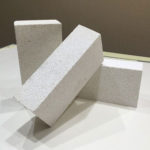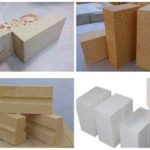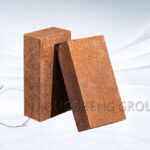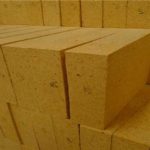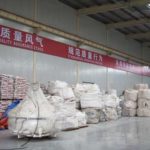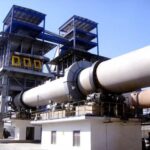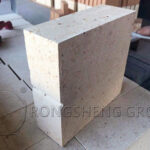High-quality silica bricks for glass kilns have the characteristics of silica content and low melting index. It is mainly used for the upper structure of the glass kiln, the parapet, the hanging wall, the small furnace, and the regenerator. SK-42 silica refractory brick, silica brick manufacturer, customized on demand, Rongsheng Silica Refractory Brick for Sale, Directly from Manufacturer.
High thermal conductivity silica bricks have been greatly improved in terms of structural morphology, crystal structure, and physical and chemical indicators. Structural morphology of high thermal conductivity silica bricks. Comparing the structural morphology of high thermal conductivity silica bricks and traditional silica bricks by 20 times, it is found that the pore size of high thermal conductivity silica bricks is smaller and the distribution is more uniform.
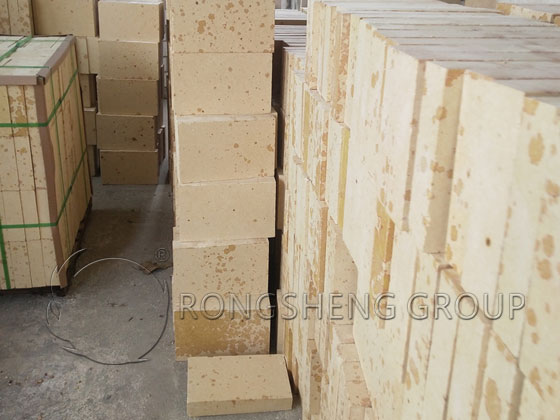
Silica bricks are made of silica with a SiO2 content of not less than 95%. It is prepared by adding mineralizers and binders, kneading, molding, drying, firing, and other processes. Tridymite, cristobalite, and a small amount of residual quartz and glass phases are formed after high temperatures. When cristobalite is heated at about 220-240°C, a certain degree of thermal expansion occurs. The maximum expansion of silica bricks occurs between 100 and 300°C, and the expansion before 300°C is about 70% to 75% of the total expansion. The reason is that SiO2 has four crystal transformation points at 117°C, 163°C, 180~270°C and 573°C during the oven process. Among them, the volume expansion caused by cristobalite is the largest between 180 and 270 °C.
The tridymite content of the high thermal conductivity silica brick is 70%, and the tridymite content of the traditional silica brick is 60%. The tridymite content of high thermal conductivity silica bricks is 10% higher than that of traditional silica bricks. Tridymite is a spearhead-like twin crystal structure, very dense, which is conducive to the improvement of thermal conductivity. After the thermal conductivity of high thermal conductivity silica bricks is improved, other performance indicators are consistent with traditional Coke oven silica bricks. That is to say, high thermal conductivity silica bricks all inherit the advantages of traditional coke oven silica bricks, and further highlight the characteristics of high thermal conductivity on this basis.
When preparing silica brick mud, a certain amount of waste silica bricks is usually added to the ingredients. Its purpose is to reduce the expansion and stress generated when the product is fired, reduce the occurrence of cracks, and improve the yield. The amount added is related to the shape and weight of the brick. For special-shaped bricks weighing less than 25kg, 20% can be added, for special-shaped bricks weighing more than 25kg, 30% can be added, and for special-shaped silica bricks, 30% can be added. Such problems should also be paid attention to when adding waste silica bricks. Too much addition will reduce the refractoriness and mechanical strength of the product and increase the porosity. Therefore, the number of waste bricks added should not be too much.

High-quality Silica Brick of High-Temperature Resistance, Good Thermal Stability
Silica brick is an acidic refractory material, the softening temperature under load is as high as 1640-1670°C, and the volume is relatively stable under high temperatures for long-term use. The true density is 2.35g/cm3. It has anti-acid slag corrosion performance. Higher high-temperature strength. The load softening start temperature is 1620~1670℃. Long-term use at high temperatures without deformation. Low thermal shock stability (heat exchange in water is 1~4 times). Natural silica is used as raw material, and an appropriate amount of mineralizer is added to promote the conversion of quartz in the green body into tridymite. Slowly fired at 1350-1430°C under a reducing atmosphere. When heated to 1450°C, there is a total volume expansion of about 1.5~2.2%. This residual expansion will make the cut joints close and ensure good air tightness and structural strength of the masonry. Therefore, the maximum melting point of silica bricks will reach above 1750 °C when the load softening temperature is 1620 °C.
It is mainly used for the partition wall of the carbonization chamber and the combustion chamber of the coke oven, the heat storage chamber, and the sedimentation chamber of the steelmaking open hearth furnace. Vaults and other load-bearing parts of kilns such as soaking furnaces, refractory materials for glass melting kilns, and ceramic firing kilns. It is also used in the high-temperature load-bearing parts of hot blast stoves and the top of acid-open hearth furnaces.
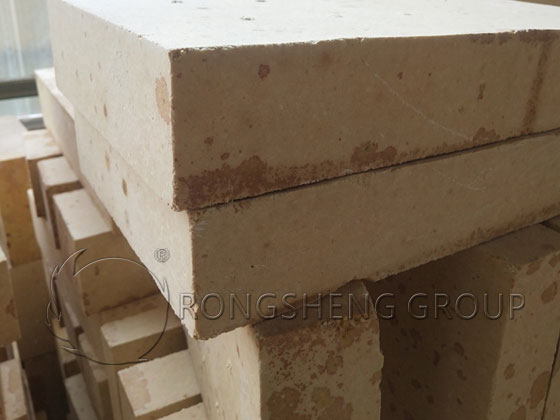
High-Quality Glass Kiln Silica Bricks with Strong Corrosion Resistance to Acid Slag
Silica brick is the most commonly used and most important brick type in various types of glass kilns. Silica bricks are mainly used in the ceiling, parapet, end wall, small furnace, and regenerator ceiling of the upper space of the glass melting furnace. The raw material for producing silica bricks is mainly crystalline quartzite, and a small amount of iron oxide and calcium oxide are added as mineralizers. In order to promote tridymite as completely as possible and keep it firing in a stable temperature range. The SiO2 content of silica bricks is 93% as the lower limit, and the high-grade products are 96% to 98%.
Silica bricks have high structural strength at high temperatures, such as a high softening point under load (1640~1700°C) and low creep rate [1550°C-50h-0.2MPa-(6~7)×10-5]. Moreover, after absorbing a small number of alkaline components, except for very slight corrosion, the structural strength of the kiln roof will not be reduced.
The main disadvantage of silica bricks is low thermal shock resistance. The firing of silica bricks is a key link in the entire silica brick production process. In firing, it is necessary to strive to complete the phase change process to the greatest extent, to form an ideal microstructure and have better performance.
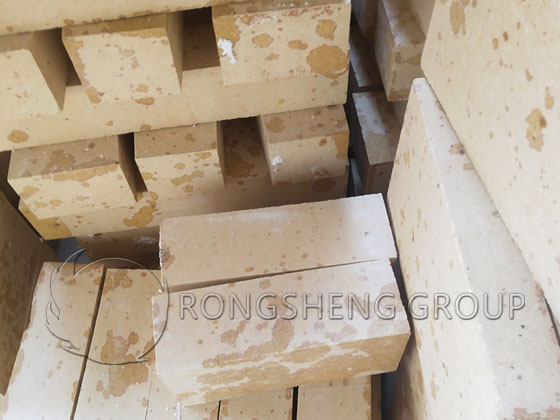
According to the phase change characteristics of quartz, the following stages should be controlled during firing.
- (1) The stage of 500~700°C is the range where β-quartz transforms into α-quartz, and the volume expansion is 0.82%. Calcium hydroxide decomposes and undergoes a solid phase reaction with the surface of quartz particles to generate CS.
- (2) In the range of 800~1000°C, a small amount of liquid phase can be generated under the action of a mineralizer. According to the measurement results of the electronic dilatometer, there is a slight contraction at this stage. Firing at this stage is relatively safe.
- (3) The temperature range above 1250°C is the stage of metastable cristobalite formation. For quartz, there will be about 15% volume expansion. Slow down the heating rate as much as possible. However, the amount of liquid phase formation will also gradually increase, which will slightly balance the huge volume effect.
- (4) The stage of 1350~1450°C is the stage of massive crystallization of tridymite. There will be a volume expansion of 16.0% from α-quartz to tridymite, but it is impossible for quartz to be directly converted to tridymite. Instead, it is transformed from metastable cristobalite to tridymite, and the volume effect of this phase transition is not large. However, at this stage, the heating rate should also be controlled. This is because ① At this stage, the phase transition of quartz into metastable cristobalite still occurs. ② Sufficient time should be given to ensure that the crystallization of tridymite is as complete as possible. Therefore, the firing and holding time at the stage above 1350°C are very important to perfect the microstructure formation and obtain the best high-temperature volume stability.
Rongsheng High-Quality Glass Furnace Silica Bricks
Rongsheng refractory manufacturers provide a variety of high-quality working lining refractory products and insulation layer refractory products for various high-temperature industrial furnaces. Our multiple refractory material plant areas can simultaneously meet the various refractory lining layers for the normal operation of industrial furnaces. In the supply of refractory materials for glass kiln, our customers have achieved good results. As a result, it has gained more recognition from customers. Contact us for free details.
Leave Your Requirements on RS Kiln Refractory Bricks And Castable Materials! We Will Reply You In 12 Hours!:
